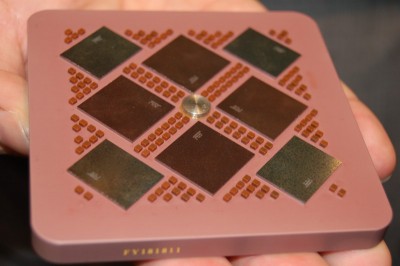|
Stepping outside of the scrap terms.
Motherboards, in the modern post 1974 sense, break down into fairly rigid categories.
The oldest style, still used today in embedded and compact designs, is a soldered cpu. A secondary co-processor, and dozens of separated controllers each with its own function.
This gave way to the more modern style that we recognise today. A socketed CPU, a handful of ICUs. Integrated Controller Units. The CPUs were often DIP, dual inline pin. Long rectangles.
In the late 80s and early 90s this gave way to, like the one in question above, a series of semi-proprietary designs as various companies fought for something exclusive to sell their brand.
The idea of using CPU riser cards wasn’t new. That’s something that has always existed in minicomputers. Even later mainframes. Apple and Atari both supported (unofficially) the use of plug in cpu cards in the early 80s. Often an x86 card.
But the idea was turned upside down in the late 80s. Manufacturers started using a base design for the motherboard and used a secondary proprietary riser for the CPU board and added other functions. These boards usually fall into one of the telco classes. The motherboard boards will be a single socket or peripheral class depending on how much was moved to risers.
In the 90s things just went weird for a while.
Boards were made that would take a 386 in one socket OR a 486 in another. But these count as single socket motherboards. Because there’s no redundancy. Boards like this often had a third socket as well for the respective MATCHED 387 or 487 math coprocessor.
Then there were boards that would take a 486 or pentium in matches sockets.
Then you had Slot Processors. These put the CPU on a perpendicular board that plugged into the motherboard. Unlike risers these were solely a cpu and all it’s cache. The rest of the motherboard was left on the motherboard.
Then we got boards with a socket and a slot as the slot processors were faded out. Again no duplication so still single socket boards.
Dual socket boards, based on the scrap idea, do not exist on intel based boards prior to the pentium pro
There are a few rare examples of AM486 and K5 dual socket boards from AMD though.
And multi-socket was popular in the RISC world.
A dual socket board has duplication on it. Each processor needs it’s own resources. Boards for two CPUs double the base. Going to 4 CPUs and you get even more expansion added to the motherboard.
Yes this is a bit confusing.
Especially since 8bit, 12bit and early 16 bit motherboards generally have dozens of sockets that all look similar.
We can further add to the confusion for a learning purpose here. You’ll likely never come across these rebels for scrap though.
IBM, DEC, DG, DE, and Xerox all played with single socket multi cpu designs. (The earliest version of today’s standard multi core CPUs).
These put multiple CPUs inside a single ceramic multi chip carrier that was nearly 8 times the standard socket size. These single socket boards would be considered multi socket because they expanded the rest of the board’s components the same as a multi socket board. I absolutely love the Power5 MCC pic over at Wikipedia. Posted below.
Finally, excluding laptop boards and cell phones, which have their own classes, you have integrated boards. Such as low profile, All in One (AiO), pico ITX, etc.
If the board has all the requirements of a motherboard (as outlined elsewhere extensively), it will be small socket with a soldered CPU. If it’s missing requirements like many Pico and Pi boards, it goes as peripheral. And if it’s greatly reduce in size but the same or more components, eg tablets, you’ll find them in a telco class.
As I always point out there will ALWAYS be exceptions.
| Attachments: |

BA02B146-8B69-417D-A908-5C10FF6E5A43.jpeg [ 73.31 KiB | Viewed 4714 times ]
|
_________________
42 6F 61 72 64 73 6F 72 74 2E 63 6F 6D
|



